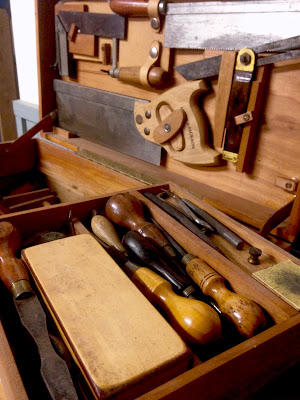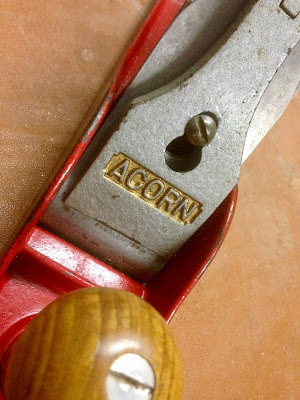
The following is a post from 'Humans in Geelong" concerning a project to build St Ayles Skiffs, but the build of these two boats is by some Syriac people from Iraq who find themselves here in search of peace and safety. It may only be two boats and a smallish group, but this is a monumental piece of community building through education and creative effort. Stories of inclusion and empathy and shared skills are so rare but never more important than now with so many voices in the West actively trying to instil irrational fear in our populations, trying to build intolerance and prejudice from insecurity.
A light emanates from the workshop in Deakin University Waterfront Campus. The sun is setting and most people are dispersing to the car parks at the end of a long day of lectures and studying. After a while, only a dozen people remain, working away on a project that intends to span years. The dream: a Pako Festa on water, with a dozen hand-built wooden boats bringing together a multicultural community for exercise, festivities and fun on the city waterfront.
For many of these builders, however, they have never seen a boat before. The Syriacpeople of Iraqi who are working on the boat alongside Geelong Iranian Society - G.I.Shave escaped devastating conditions under ISIS and travelled to Australia seeking refuge from their war-torn country.
The youngest of these is just 16 years old. For the Iraqi refugees, their ancient hometown of Bakhdida (modern-day Quaragosh) is just south of Mosel. It was occupied by ISIS and reduced to rubble in the ongoing conflict. But, Peter Doyle from the Royal Geelong Yacht Club tells me, the refugees don’t let these tragedies define them: they are focused on and enthusiastic about their future in Australia. He adds that most of their conversations focus on mundane topics such as football, and I notice small buzzing conversations across the workroom in between the buzzing of tools.
The project, launched in May this year, has a goal of building 10-12 boats. Based on Scottish coastal rowing boats of early last century, the St Ayles Skiffs were designed by Australian boat builder Iain Oughtred who now lives in Scotland. Built entirely from Australian timbers, they are delivered as flat packs and assembled with epoxy with not a screw or a nail in sight. What I really enjoyed from learning about this project was the sheer joy, enthusiasm and welcoming environment that I found myself in. It was with great enjoyment that I watched Peter rifle through his photo album of these skifs from all over the world. “Isn’t this one gorgeous!” he tells me, pointing at the photographs of handcrafted wooden skiffs in his folder.
As for Peter himself, he is retired and is now dedicated to his passion for boats, bringing these boats and their builders down to the Waterfront for the Wooden Boat Festival Geelong in March. In an incredible feat, one of these skiffs was towed across the Nullarbor from Perth to attend last year’s festival. With many smiles and an increased knowledge of boats, I left that evening to allow the group to continue to work with the warm light of the studio emanating through the approaching night and the clangs and whirrs of the tools the only sound that remains.
I returned on a sunny Saturday morning with our photographer Phil Hines in tow and was pleased to observe the workshop in full action. Since my last visit, the very first boat created by the group had been named: Bride of Bakhdida. On the whiteboard in the workshop, the name of the boat is written in the Syriac script. That name will be written in both English and Syriac on the boat upon its completion, signifying the unity between the Geelong and Syriac communities and reflecting Australia’s multicultural nature. Further demonstrating this fusion, on the whiteboard is also a list of boat-related terminology in English, Syriac and Persian (the language of Iran). ‘Hello’ is shlama lekow in Syriac and salam in Persian.
I spoke with Arash and Shiva about the decision for the Iranian community to collaborate with the Royal Geelong Yacht Club in building these boats but I was swiftly corrected: “It was all Peter’s idea,” Arash insisted. The glowing praise for Peter’s work and commitment to bringing Geelong’s ethnic communities together to build and use these beautiful boats was extraordinary. My final question was what they were the most excited for in the near future for the project. “Seeing the first boat on the water,” Arash replied. “That will make all the difference.”
Written by Stephanie Downing. Photo: Phil Hines Photography














